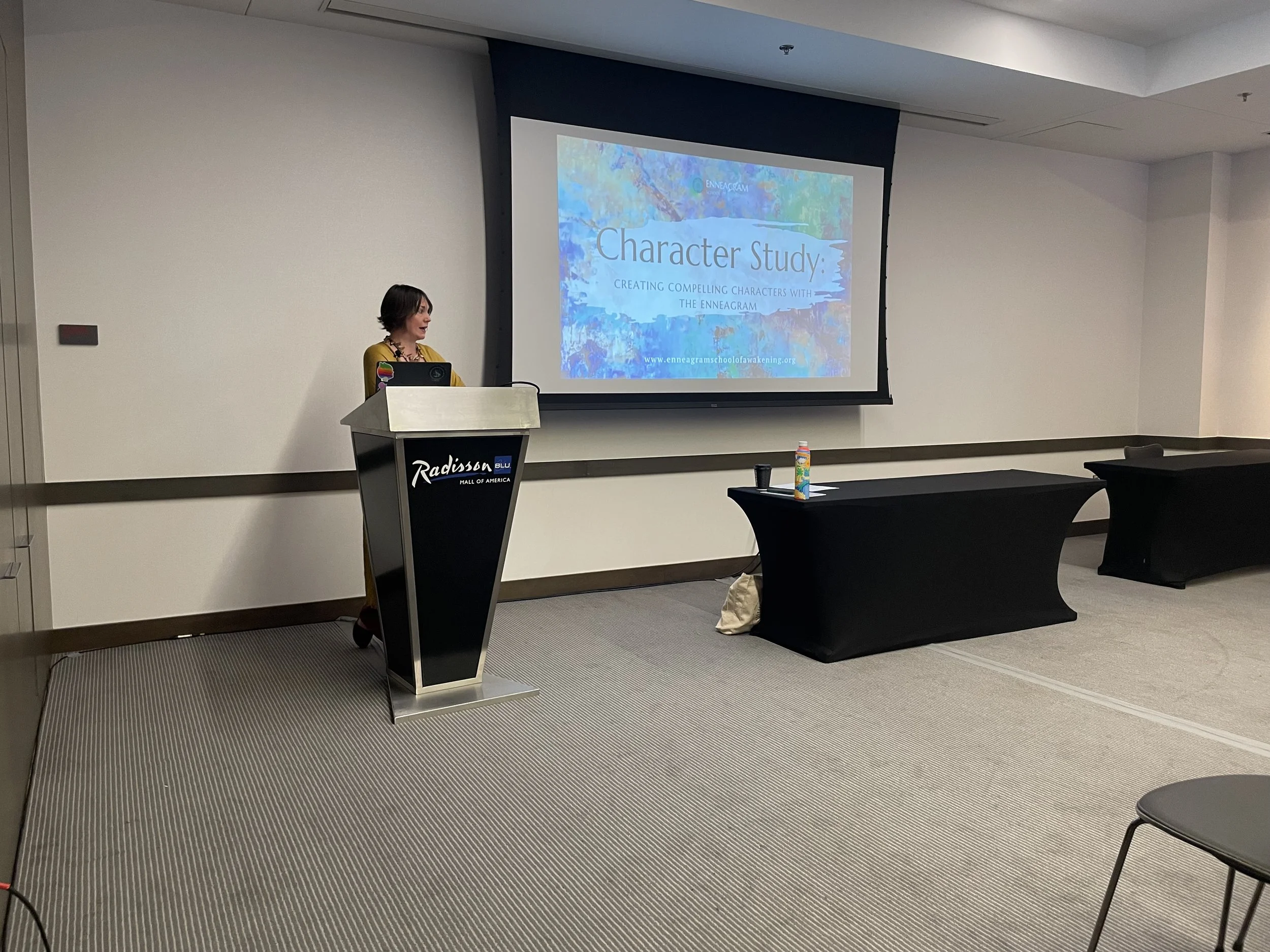
Explore The Enneagram
What is the Enneagram?
Enneagram simply means “writing of nine.” The Enneagram teaches us that there are nine distinct ways of moving through the world, each offering a unique lens through which we experience life. While we possess traits from all nine types, one core type primarily shapes our approach to work, relationships, and personal growth. While our core type never changes, the Enneagram is a dynamic symbol, and recognizing the role of movement across the lines and through the so called “levels of development,” which we can think of as a vertical movement up or down in our awakening process, is a critical part of understanding the Enneagram.
Until we uncover our type and begin to engage with it consciously, we remain stuck in reactive patterns, responding to life rather than fully experiencing it. However, once we start working with our type, we open the door to a deeper awareness of ourselves. This process reconnects us to our true nature — referred to as “Essence” — which exists beyond personality. Through this work, we begin to truly see ourselves.
Understanding our type not only deepens self-awareness, but also transforms the way we relate to others. As we recognize that each person is driven by different underlying motivations, the Enneagram becomes a powerful tool for building empathy and connection. By embracing this wisdom, we move beyond habitual reactions and step into a more conscious, compassionate way of being.
Fundamentals: The Symbol
The Enneagram symbol shows 9 points, or types, split across two overlapping shapes – a hexad and a triangle – laid out in a circle with interconnecting points.
The nine types are organized in three triads, each comprising three points. Triads correspond to a center of intelligence, or primary way that the points relate to the world. These are:
🧘The Body / Gut Triad: Points 8,9,1
Process first through instinct, “gut feeling,” intuition. Can be dense/solid and grounded in body type. Dealing with: Anger, power, control
💓The Heart Triad: Points 2,3,4
Process first through emotional center, feelings, sense of connection/rejection. Reading the emotions of the room, or projecting their own emotions into it. Dealing with: Love, shame, image
🧠The Head Triad: Points 5,6,7
Process first through intellect, analysis (whether right or wrong), ideation. Can feel disconnected from / misattuned with their bodies. Dealing with: Fear/doubt, trust, intellect
Of course, the human experience means that we have all, at one point or another in our lives, experienced the core issues of each triad to some degree. If a particular triad is our homebase, though, the core issues will be exacerbated, and the triad itself will take up more space energetically in our lives. The goal is to bring these three centers of intelligence, which each have their own unique ways into wisdom and healing, into healthy balance.
What is the Embodiment Tradition?
The Embodiment Tradition brings the revolutionary teaching of the Energetics to the Enneagram work: the way each type moves energy outward, inward, or around the core issues of their type. Energetics are most obvious when someone is very stuck in their fixated pattern. Even when someone is very open and more connected to their Essence, the energetic signature of their type is still present. Because of this, using Energetics supports identifying types correctly, and, more importantly, helps us feel into each type within ourselves.
The External / Outward Types: 8, 2, and 7
These types direct their energy outward, actively influencing their environment. While they aren’t always extroverts, their energy can feel large, even intrusive, and people can have big reactions to it.
The Internal / Inward Types: 4, 5, and 1
These types focus their energy inward, pulling away from the outside world to process their inner experience. They are more aware of deep states of emotion, thought, or control, and their energy can feel smaller and more pulled in than the outward types.
The Adapting Types: 3, 6, and 9
These types are flexible and adjust to their surroundings in different ways, avoiding the core issues of their type by shifting toward or away, and vacating their Center of Intelligence. They shape themselves based on the environment, the situation, and the people around them, and can struggle to identify themselves.
Explore The Enneatypes
Exploring Instincts and Subtypes
Beyond your Enneatype, there’s another important angle to understanding the Enneagram, which many teachers say is as – or even more – important than working with your core type: the Instincts. Just as there are three Centers of Intelligence, there are also three Instincts: Self-Preservation, Sexual, and Social.
Instincts are shared among all animals – hence their name. They developed to help us survive and ensure that our basic needs could be met across these three areas. As we become stuck in the illusion of our personality, our Instincts also go on autopilot, creating havoc in our lives and keeping us from expansive growth.
As we have all nine types, we also have all three Instincts in a particular configuration. Instincts can change the outward appearance, but not the energetic or essence, of the type. Instincts also stack, with one leading (so much so that someone may not realize it’s of primary importance), one evident (sometimes called “the playground” – what you prioritize after primary instinct needs are met), and the other coming last, and often in shadow (called the “blind spot”). Our core type functions to meet the needs of our primary Instinct.
The goal of Enneagram work is to bring the Instincts into a healthy balance.
This doesn’t necessarily mean they will be evenly split, but that priorities and needs of each Instinct is given space and that needs are met in integrated ways, rather than through the fixation of the personality.
Instincts are called Subtypes when they are used with type. Here are the main priorities of each Instinct:
Self-Preservation
Most concerned with self and surroundings, physical safety, comfort, allotment of personal resources, home. May overdo or underperform in the area of self-preservation – for example, they might exercise obsessively or be totally chilled out and not move much at all.
Sexual
Most concerned with pursuing passion/zeal, chasing the energy of creativity and destruction. Has strong reactions and feels extremes. Look more “image” than the other Instincts, and have a brand – some people are very attracted to them, while others are not (they are not for everyone, only for the one)
Social
Most concerned with the group and their identity within it. Very aware of social dynamics and who is in or out of the group. Not necessarily extroverted. Often in positions of leadership (whether obvious or not). “On the throne.”






























